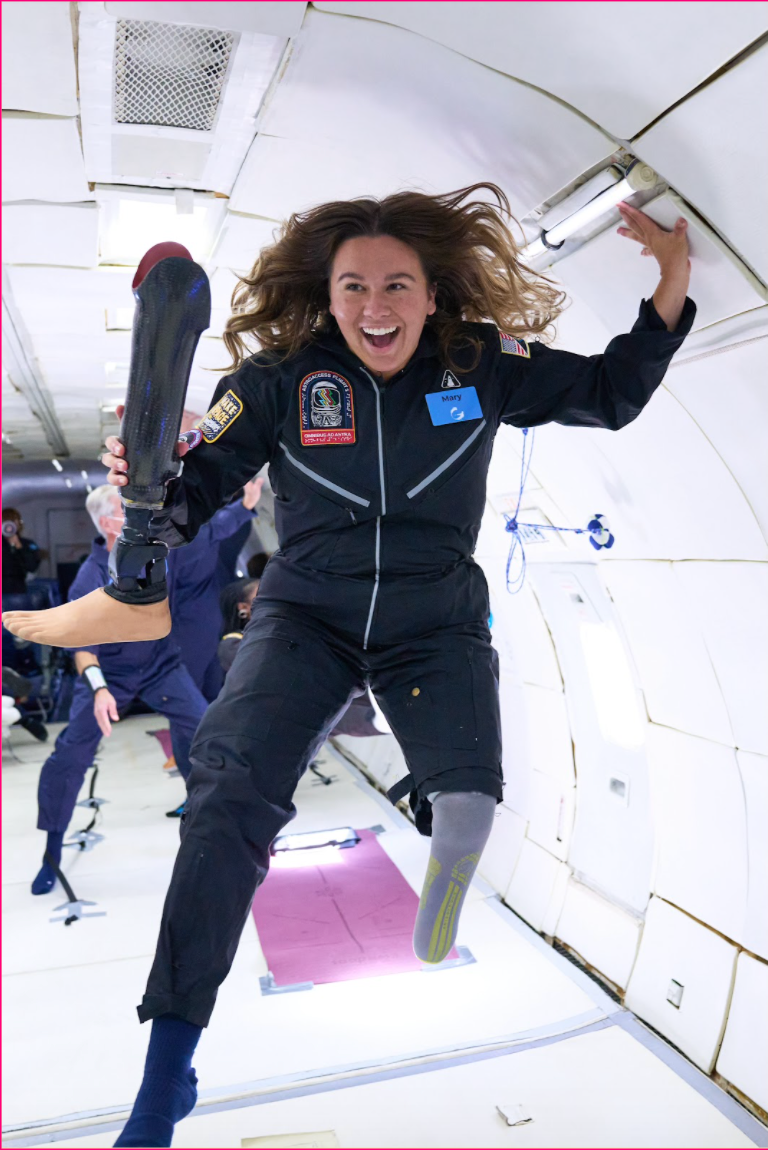Mary Cooper ’22 was one of 12 Disability Ambassadors who participated in AstroAccess’ first Zero-G flight to experiment with accessible design on commercial space aircrafts on Oct. 17.
AstroAccess is an organization that aims to prove that inclusive design in space technology is not only possible, but safer and more helpful to all users. This was the first of what AstroAccess hopes to be many flights that will allow people with a wide variety of disabilities to test, prototype and create new technology that can be implemented in spacecraft, according to AstroAccess Mission Leader Ann Kapusta.
Cooper, an aspiring astronaut and a below-the-knee amputee, was chosen as a mobility ambassador for the mission to represent people with mobility challenges. She focused on testing new rail systems placed in the cabin that would allow people with different movement abilities to navigate around the space. Cooper also practiced taking her leg on and off in zero gravity — a moment that she described as freeing.
“I had this moment where my leg was floating and I was spinning around it,” she said. “It was just a surreal picture.”
The Zero-G flight ran nearly three hours, completing about 16 parabolic maneuvers in total. Parabolic maneuvers are specific patterns of plane flight that create different gravitational environments. For each parabolic maneuver, the crew experienced 20 to 40 seconds of weightlessness. The parabolic flight also simulated Martian and lunar gravity.
Haptic Wayfinding navigation was a central technology tested onboard. It uses sensations of touch, like vibration or texture, to communicate alerts and other critical information to a user.
The keys to AstroAccess’ design process are 12 disability ambassadors. “We’re not designing for them, ” Kapusta said, “we’re designing with them.” The organization’s disability ambassadors design, prototype and test the accessible technology. Kapusta added that “accessible design isn’t hard if you think about it at the beginning and you include the people who[m] you have to design for — that wide range of people.”
And Cooper believes she and other disabled people are well-suited for the challenge.
“Being disabled naturally brings out this engineering mindset,” Cooper said. “You have to be pretty resilient by nature.”
Cooper’s goal is to access space any way she can, and she hopes to become an astronaut in the future. Those close to her say that her aspiration is not far-fetched. Tiffany Lee ’23, Cooper’s teammate and friend on Stanford’s Lightweight Rowing team, emphasized Cooper’s dedication to the team and her commitment to achieving her goals. “She works really hard at whatever she’s committed to,” Lee said.
Though Lee said Cooper has been very humble about her recent flight, Lee said she thinks “everyone knows it’s super, super cool.”
AstroAccess plans to create a more accessible future for space technology through reinventing the design process, and Kapusta said that Cooper is at the forefront of this mission.
“If we work together and really, you know, prove that this can be done, it changes the course of her career, and the ability for her to really become an astronaut and do what she wants to do in the aerospace field,” Kapusta said.
